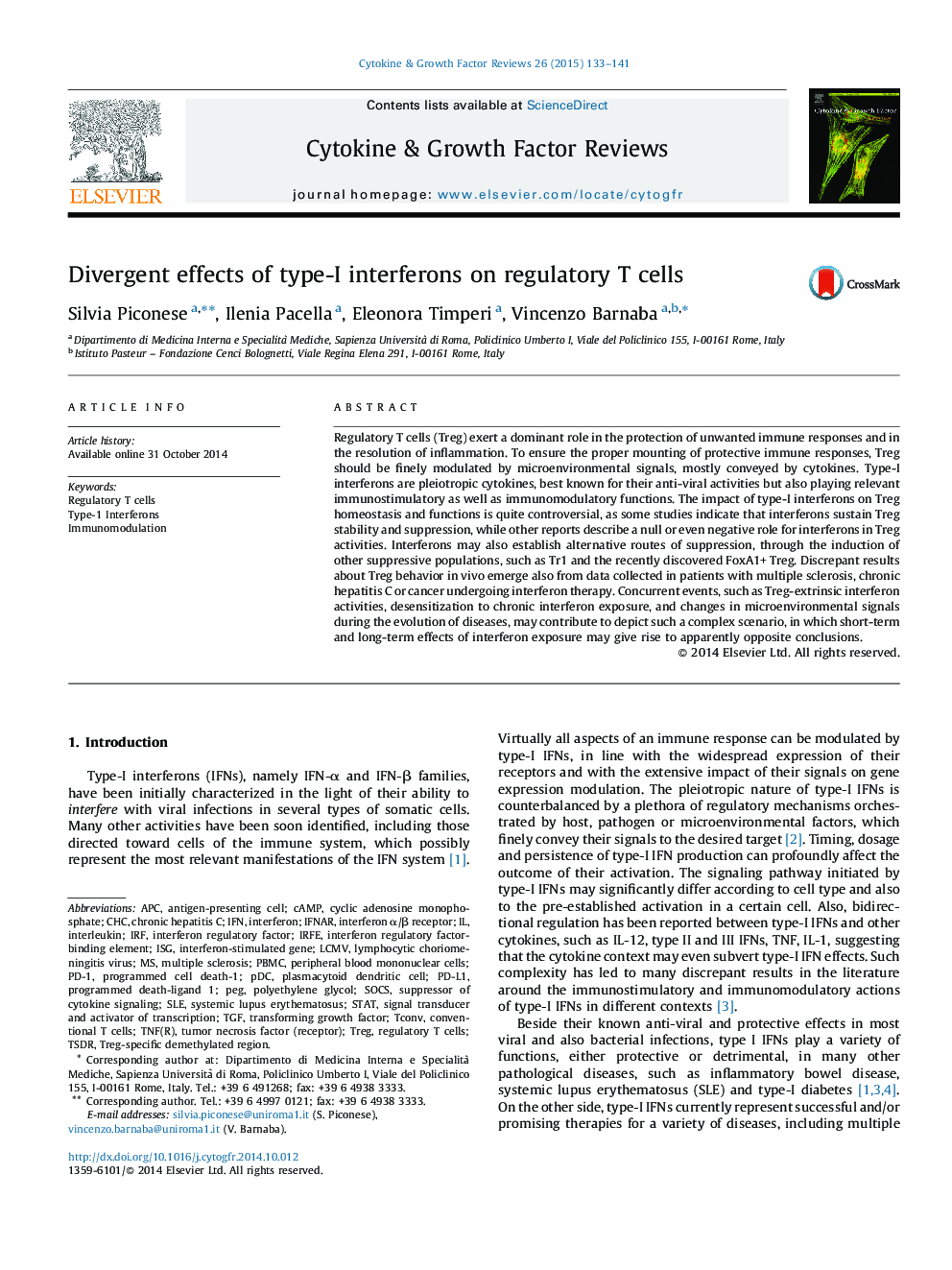| Article ID | Journal | Published Year | Pages | File Type |
|---|---|---|---|---|
| 2170496 | Cytokine & Growth Factor Reviews | 2015 | 9 Pages |
•Conflicting data exist about type-I IFNs playing pro- or anti-Treg activities.•IFNs may induce alternative suppressor T cells such as Tr1 and FoxA1+ Treg.•Some IRFs regulate Treg functions, even if the link with IFN response is unclear.•IFN therapy may reduce Treg in the short term but expand Treg in the long term.
Regulatory T cells (Treg) exert a dominant role in the protection of unwanted immune responses and in the resolution of inflammation. To ensure the proper mounting of protective immune responses, Treg should be finely modulated by microenvironmental signals, mostly conveyed by cytokines. Type-I interferons are pleiotropic cytokines, best known for their anti-viral activities but also playing relevant immunostimulatory as well as immunomodulatory functions. The impact of type-I interferons on Treg homeostasis and functions is quite controversial, as some studies indicate that interferons sustain Treg stability and suppression, while other reports describe a null or even negative role for interferons in Treg activities. Interferons may also establish alternative routes of suppression, through the induction of other suppressive populations, such as Tr1 and the recently discovered FoxA1+ Treg. Discrepant results about Treg behavior in vivo emerge also from data collected in patients with multiple sclerosis, chronic hepatitis C or cancer undergoing interferon therapy. Concurrent events, such as Treg-extrinsic interferon activities, desensitization to chronic interferon exposure, and changes in microenvironmental signals during the evolution of diseases, may contribute to depict such a complex scenario, in which short-term and long-term effects of interferon exposure may give rise to apparently opposite conclusions.
